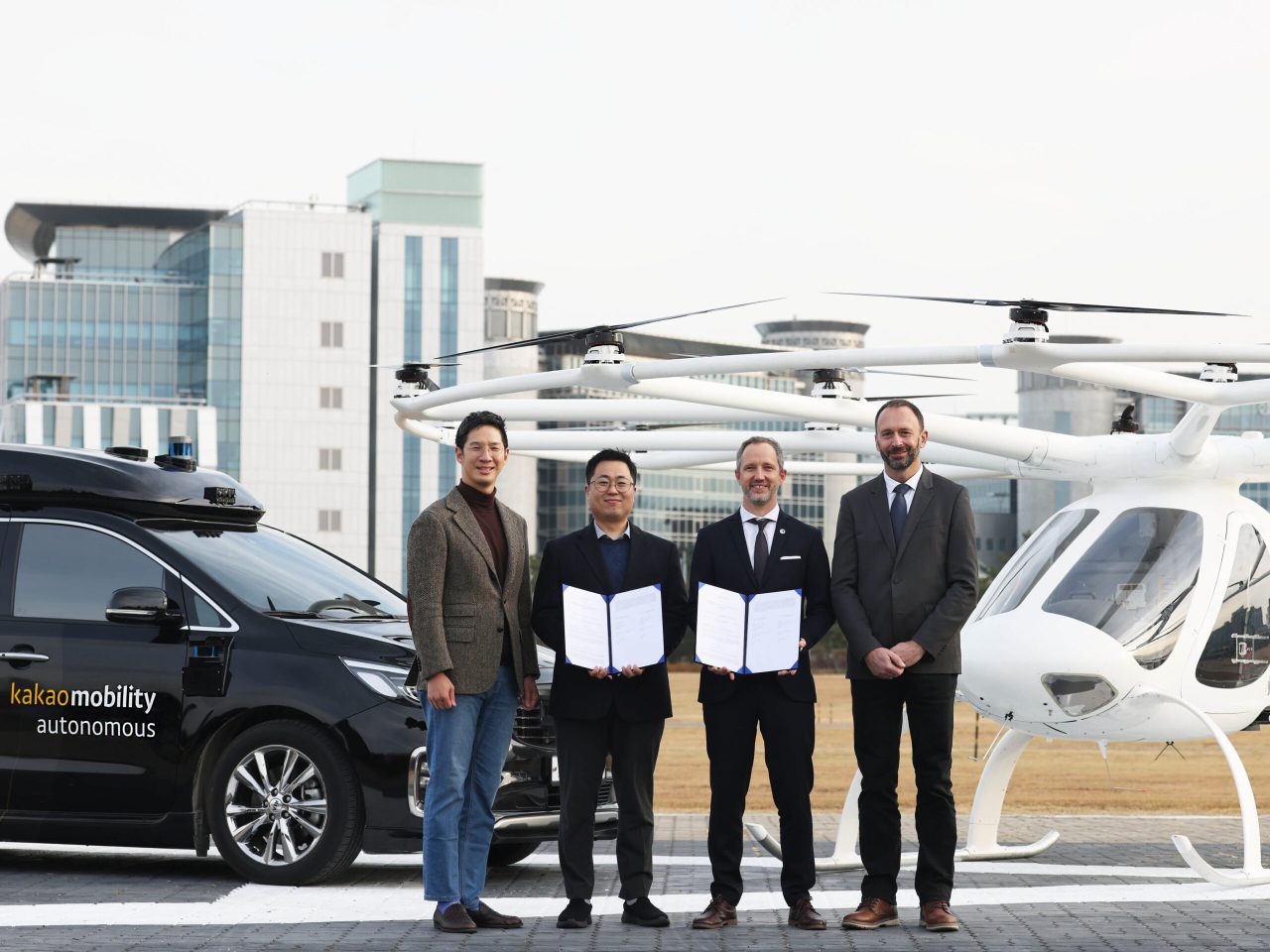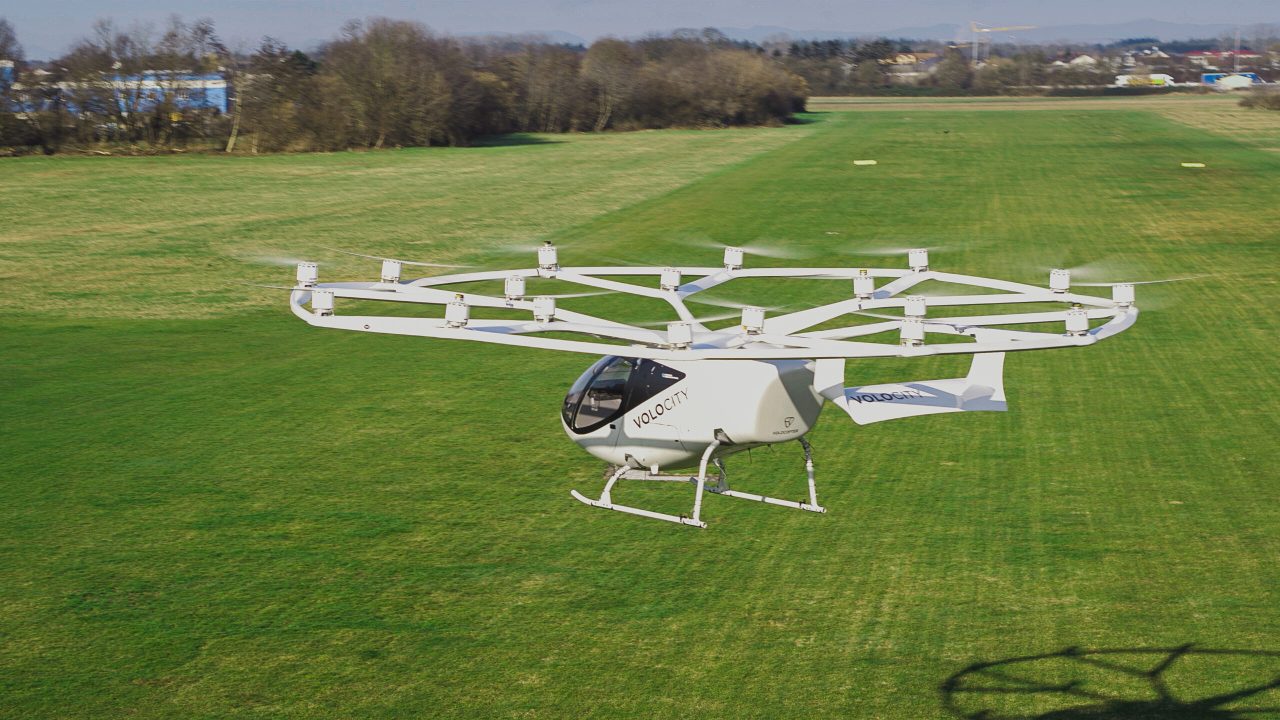 |
VoloPort, a ready-made urban vertiport concept designed by Volocopter (Volocopter) |
Stepping closer to a longtime dream of mankind, Volocopter, a Germany-based startup that develops electric vertical takeoff and landing (VTOL) aircraft, will start a commercial air taxi business in the next two years -- but overcoming regulatory hurdles and gaining public acceptance remains a challenge.
“At this point, it is no longer a question of if electric air taxi services will come to cities around the world, but when,” said Hon Lung Chu, Head of Singapore and BD Southeast Asia at Volocopter in an interview with The Korea Herald.
“We are now establishing our entire UAM ecosystem and are extremely close to the finish line to achieve type certification for our envisaged commercial launch ... We are on track to launch commercial services at the 2024 Paris Olympics and are committed to launching in Singapore in the next two years.”
The 10-year-old company has raised $579 million so far, drawing its market valuation at $1.7 billion. But its air taxi operation requires all necessary certifications from the European Union Aviation Safety Agency (EASA) and the Federal Aviation Administration (FAA), to gain easier access to global markets in Europe, Americas and Asia.
Demand for intracity air travel is expected to surge rapidly along with growing city populations. By 2050, 68 percent of the world’s population -- which is estimated to stand at 9.8 billion -- will likely live in urban areas, Chu said, citing a United Nations report published in 2018.
Of all regions, Volocopter sees greater potential in Asia. According to Chu, around 40 percent of UAM market revenue will come from the Asia-Pacific region by 2050.
“This is hardly surprising as Asia has the world’s highest concentration of megacities, and people in Asia are open to new technologies. Many governments in Asia, such as Singapore, South Korea, and Japan, are actively developing strategies to integrate UAM into their transportation systems,” he said.
In South Korea, Volocopter is working with Kakao Mobility, a mobility arm of platform giant Kakao, to strategically work on tailored air taxi routes.
Leveraging on Kakao’s existing network of urban ground mobility, Volocopter has been seeking ways to open air taxis in Seoul skies amid growing competition in the local market. South Korean carmaker Hyundai Motor also plans to launch an air taxi service in 2028.
 |
From left: Kakao Mobility’s Managing Director of the New Squad Christopher Chang, Kakao Mobility CTO You Seung-il, Volocopter CEO Florian Reuter and Volocopter’s Chief Risk & Certification Officer Oliver Reinhardt pose for a photo after clinching a partnership on Nov. 23. 2021. (Kakao Mobility) |
Volocopter conducted two rounds of eVTOL flight test in Gimpo and Incheon last year, which was South Korea’s first crewed eVTOL flight, as part of the Transport Ministry’s UAM demonstration event in November.
Currently, South Korea’s Transport Ministry is reviewing the license registration process needed for UAM operators to have their aircraft certified and set the range of airspace needed for operation. Duration and criteria will vary by aircraft or the operator, as there is no global standard and the situation of approving aircraft flight differs by market, according to the country’s transport authorities.
“We are working closely with the relevant government agencies, regulators, and partners in Korea to develop the UAM ecosystem in time for the commercial rollout,” said Chu.
Besides achieving type certification from related authorities including EASA, gaining public acceptance is crucial for success of UAM services.
“First, people will only welcome and use eVTOL aircraft in their cities if they trust that they are safe, quiet, and sustainable. With our sharp focus on safety, sustainability, and low noise emissions, the Volocopter team has designed the VoloCity with these requirements in mind, and has already performed many test flights in cities worldwide,” he said.
 |
VoloCity, an all-electric air taxi with 8 small fixed-pitched propellers and 18 electric motors on top the beam structure (Volocopter) |
In similar context, the South Korean government has announced last month that it would raise public awareness about the new concept vehicle through developing UAM tourism services and set up UAM theme parks with help of local governments and public institutions.
Volocopter has been building products to meet the needs of people through electric powered aircrafts in a new kind of urban style.
Volocopter’s VoloCity and VoloConnect are air taxis that travel short and long urban routes, respectively, while VoloDrone is responsible for a heavy-lift drone for routes in urban areas or tough terrain. VoloPorts and VoloQ are the physical and digital infrastructure to match the air mobility operations.
“We design our solutions specifically for different missions, yet all with the common qualities of very stable flight, low and agreeable sound signature and zero emissions during flight,” said Chu.
This is the first installment of a series of articles and interviews exploring the world of urban air mobility and the people behind the latest technological advancements. --Ed.By Kim Da-sol (
ddd@heraldcorp.com)









![[Today’s K-pop] Blackpink’s Jennie, Lisa invited to Coachella as solo acts](http://res.heraldm.com/phpwas/restmb_idxmake.php?idx=644&simg=/content/image/2024/11/21/20241121050099_0.jpg)
